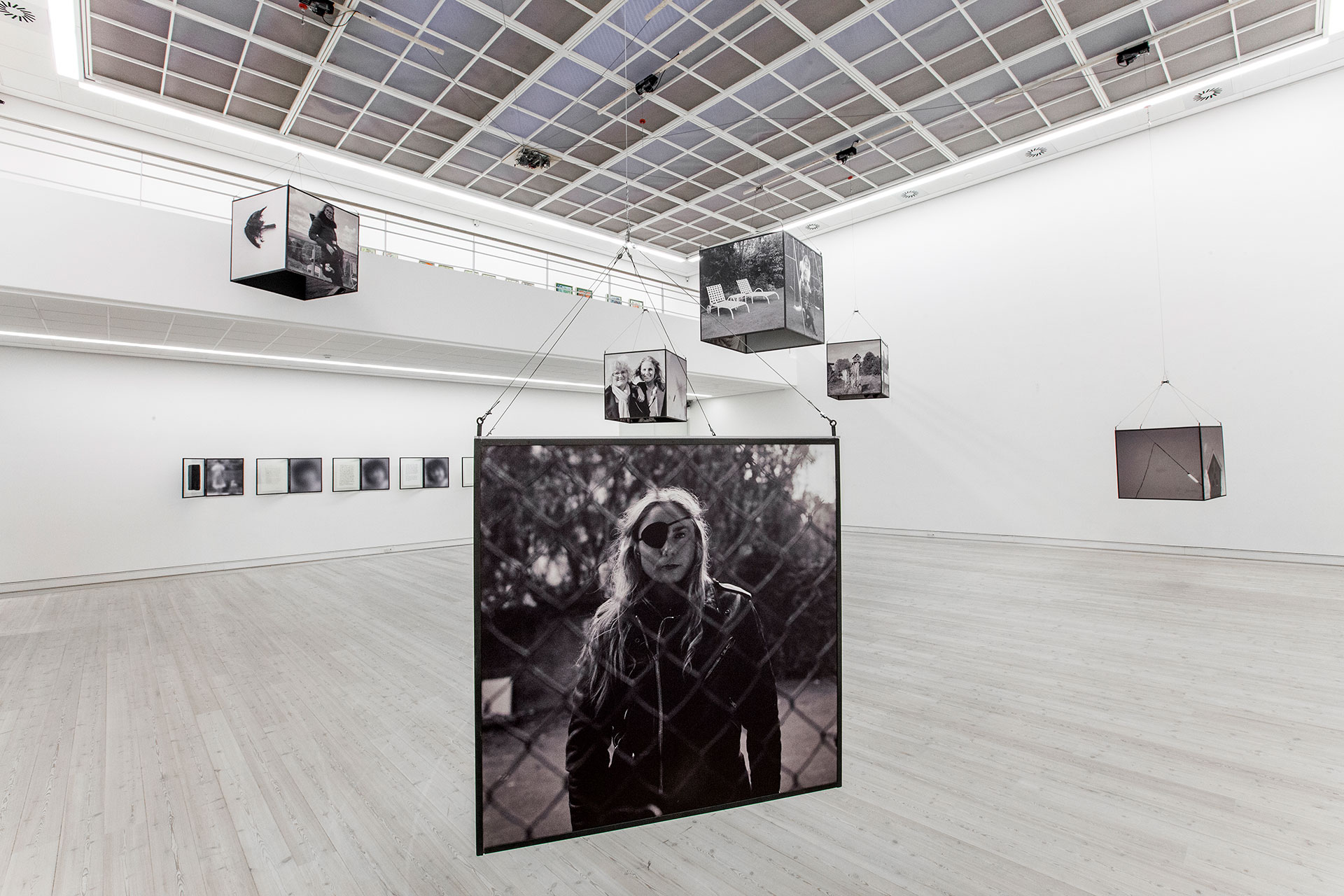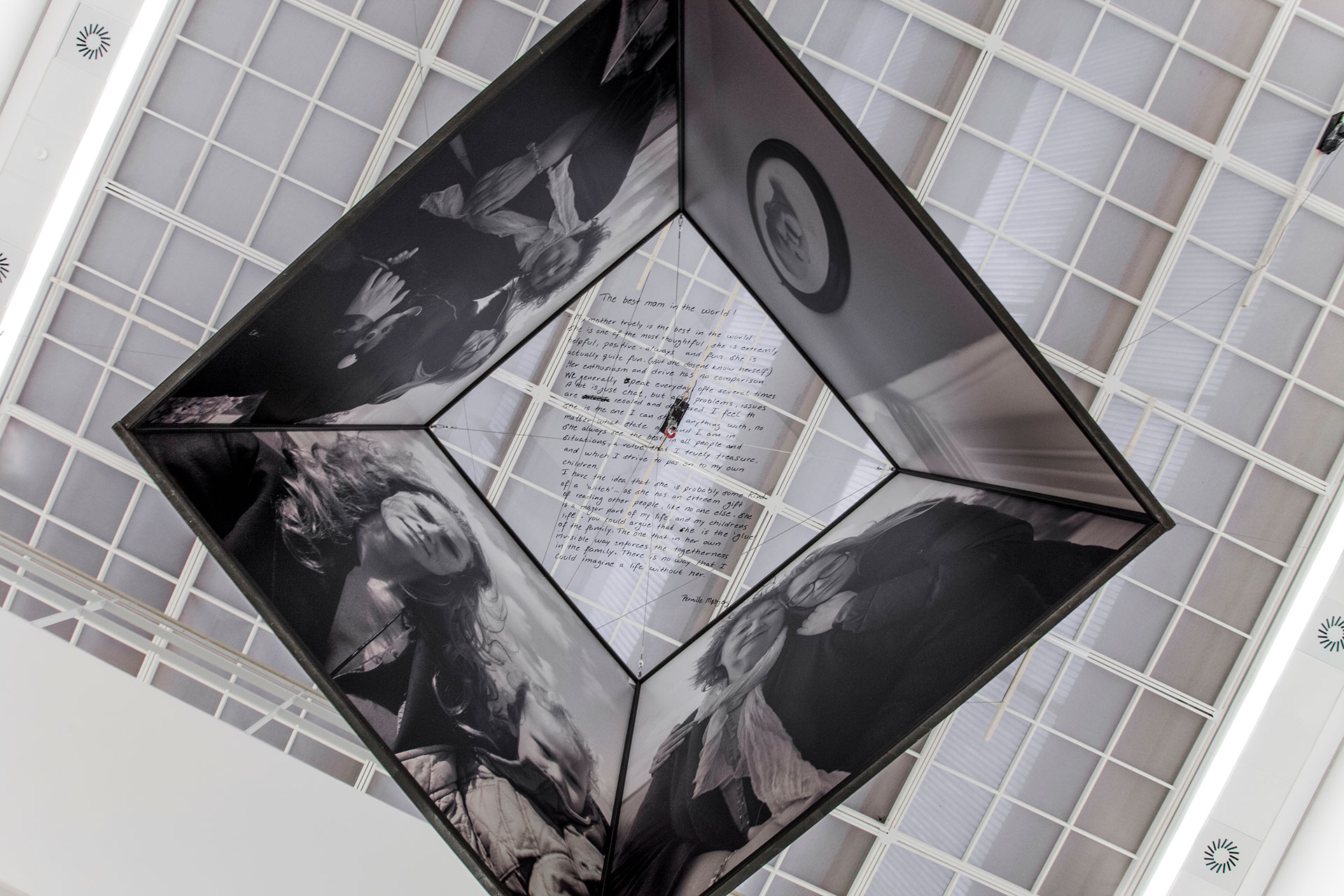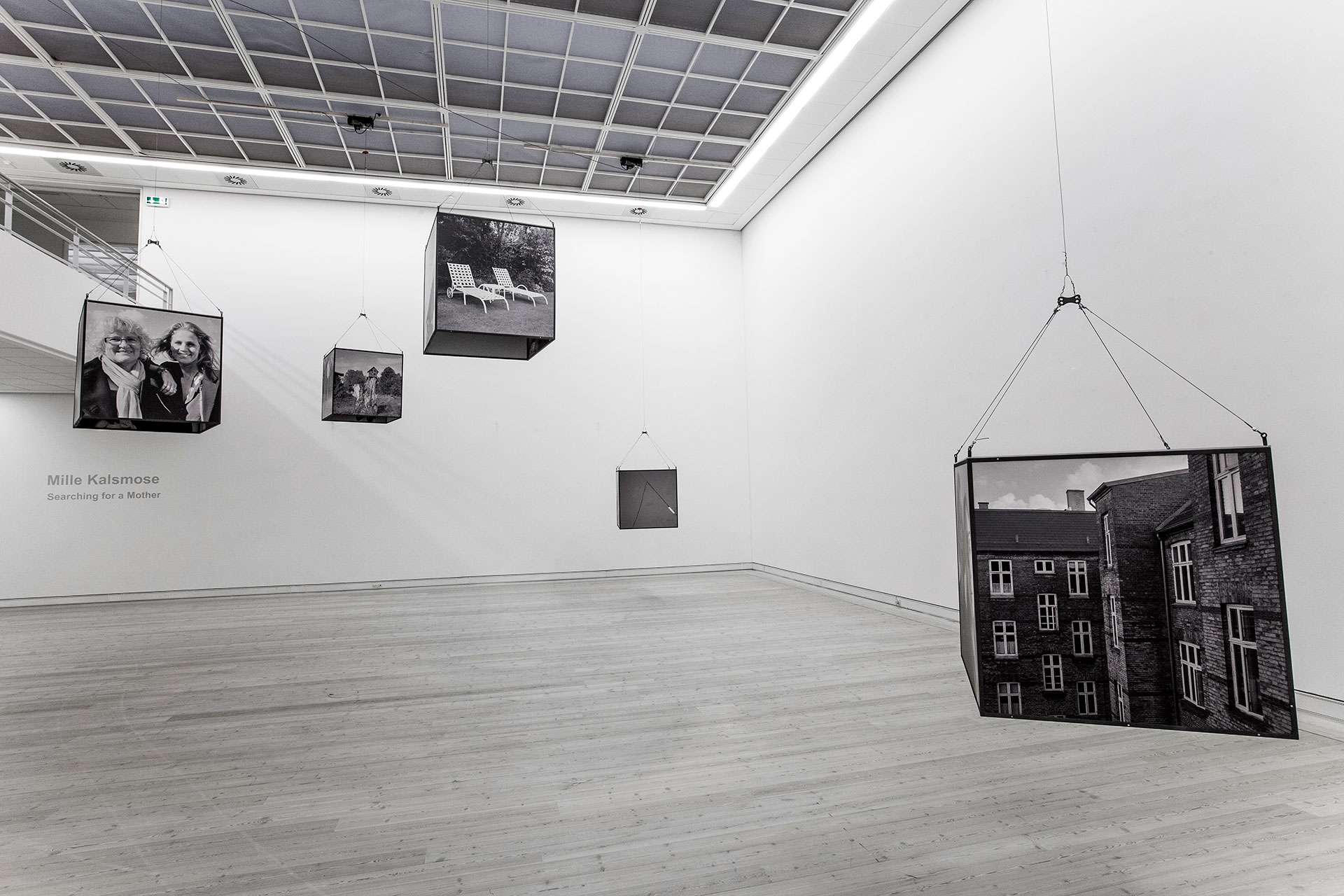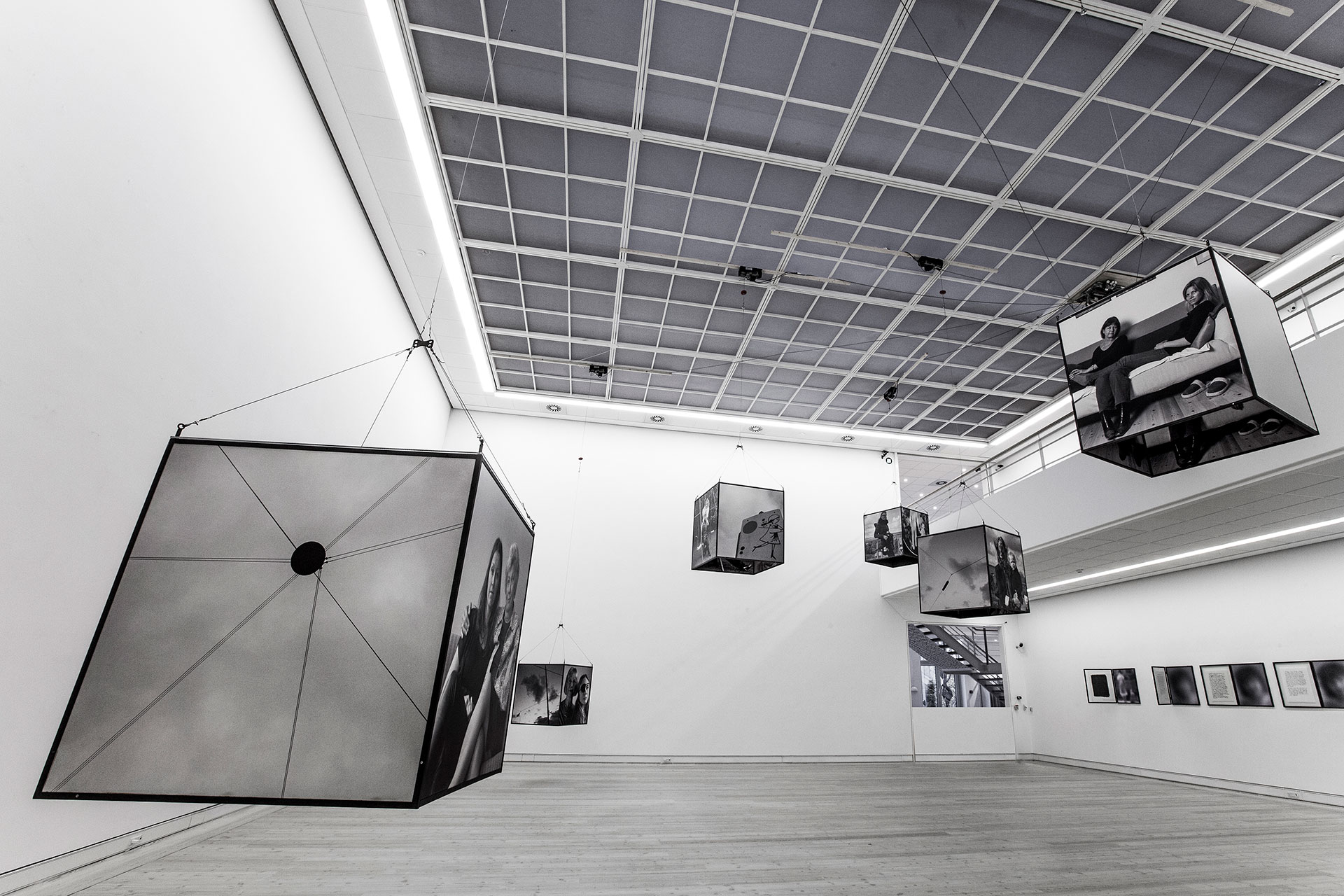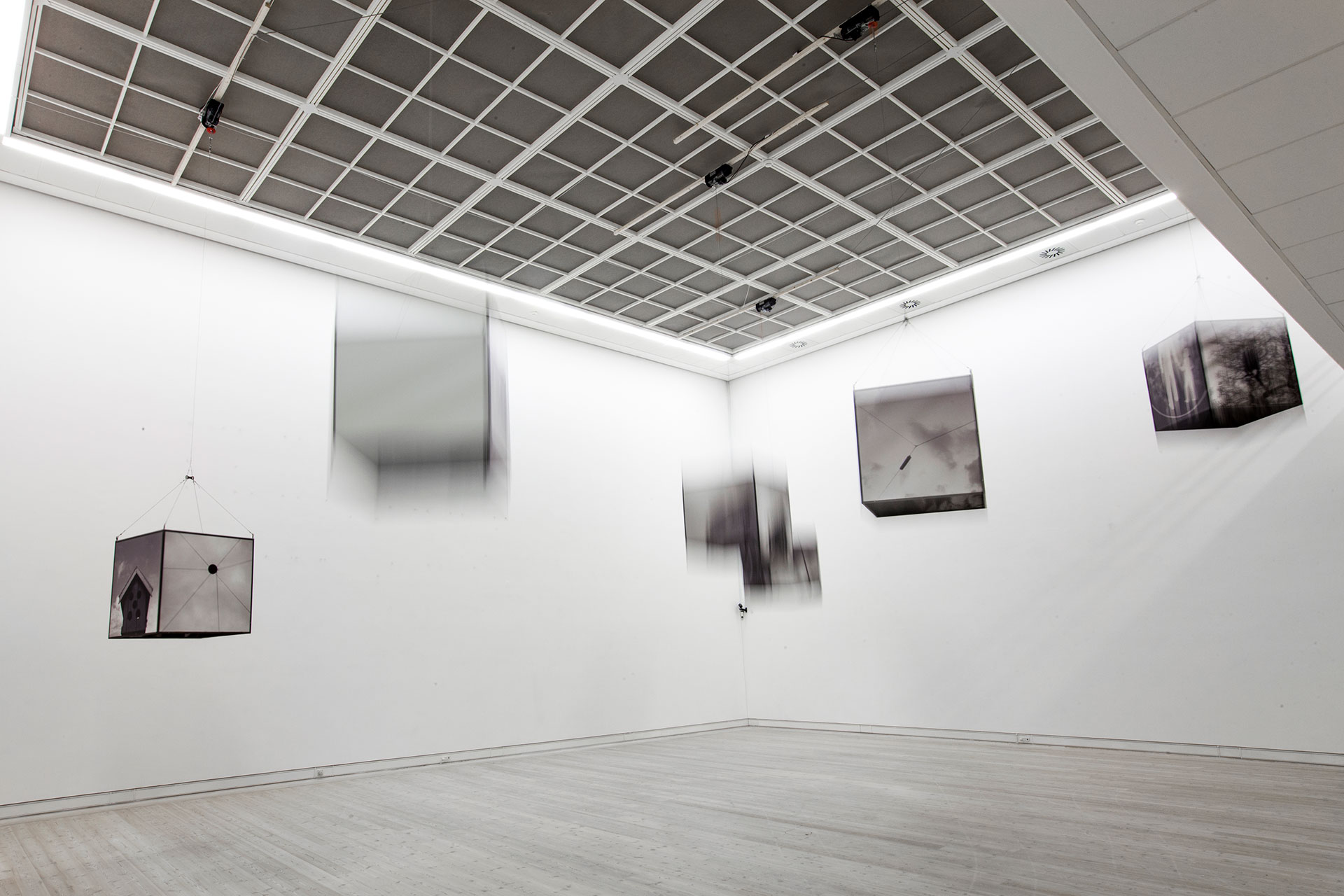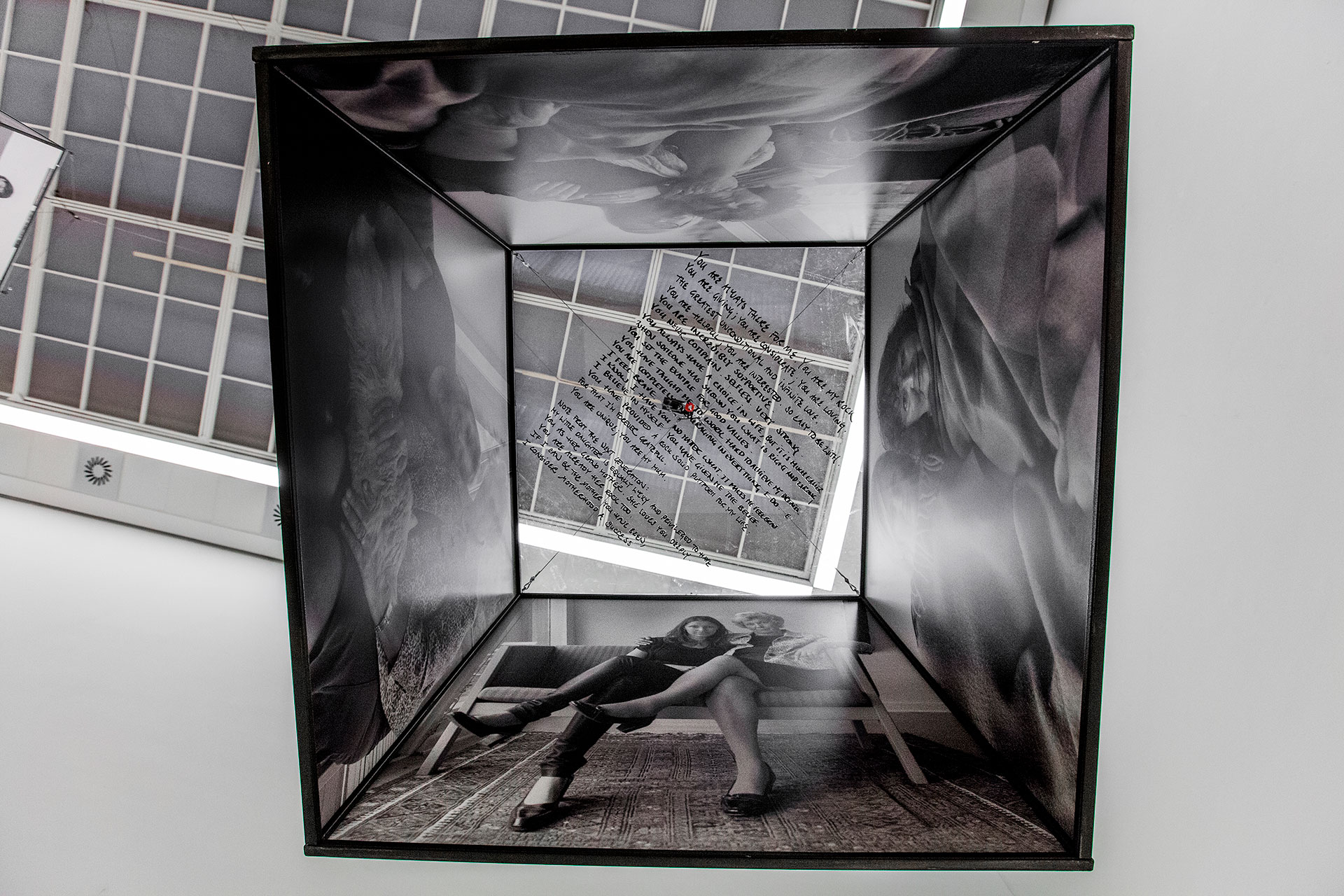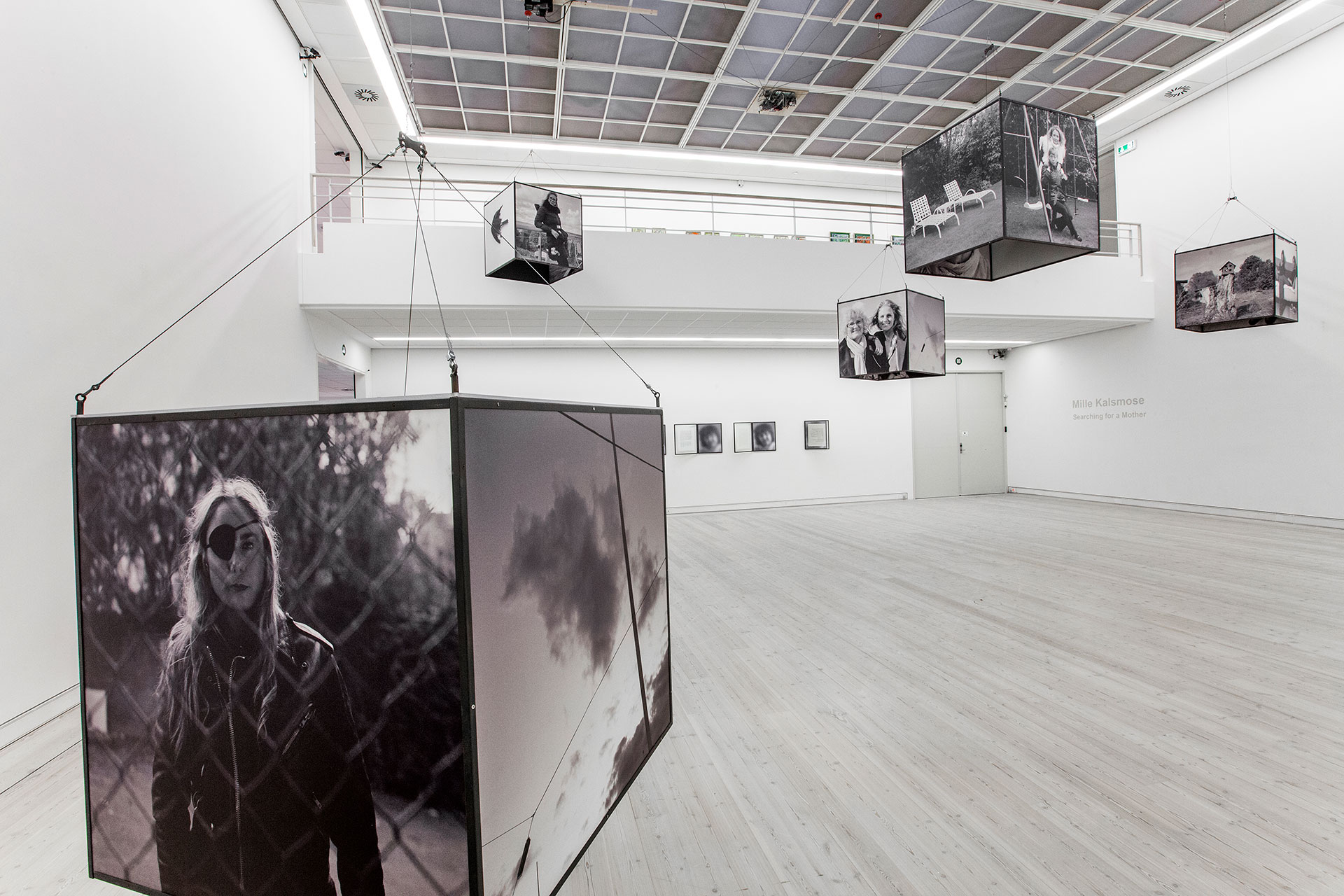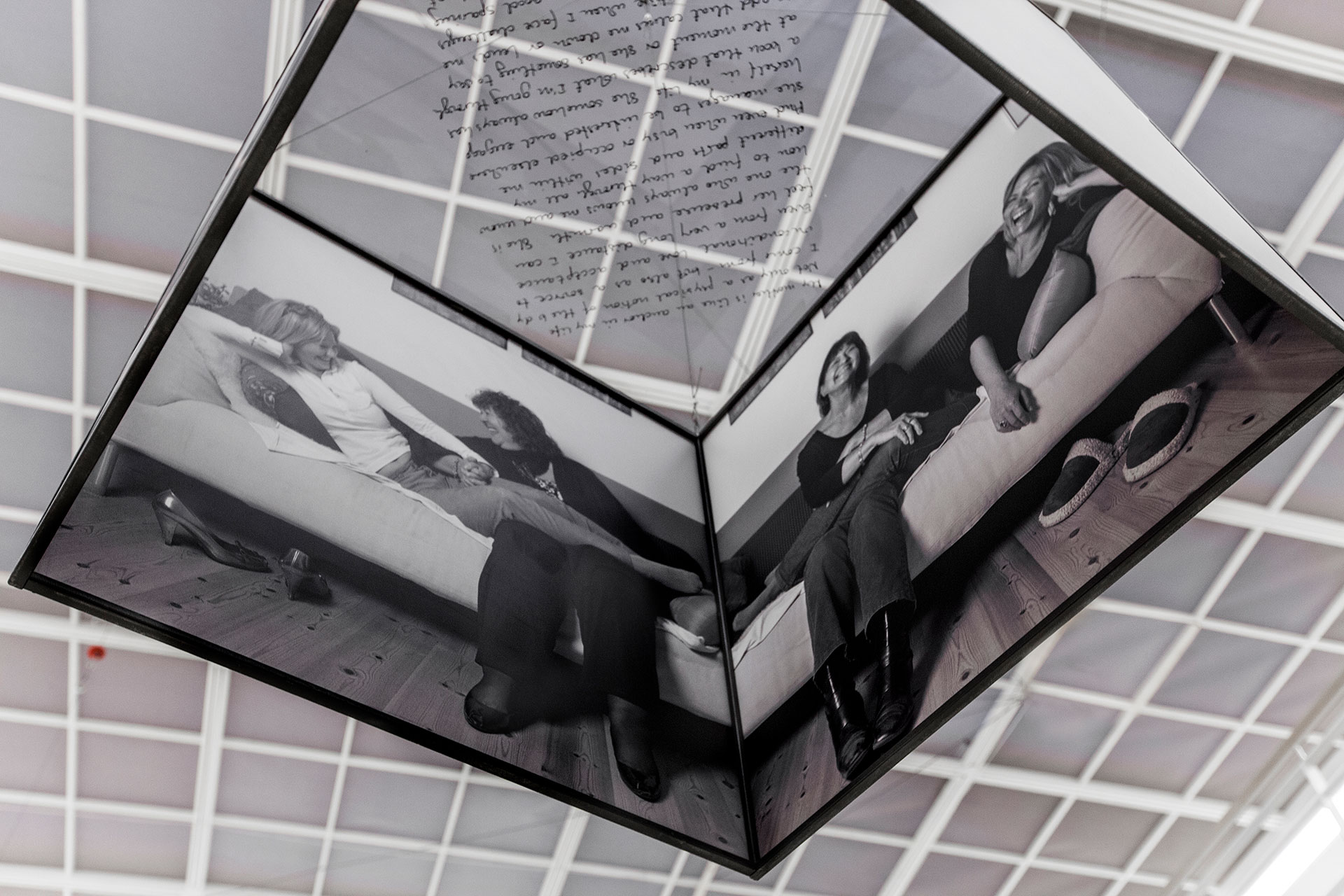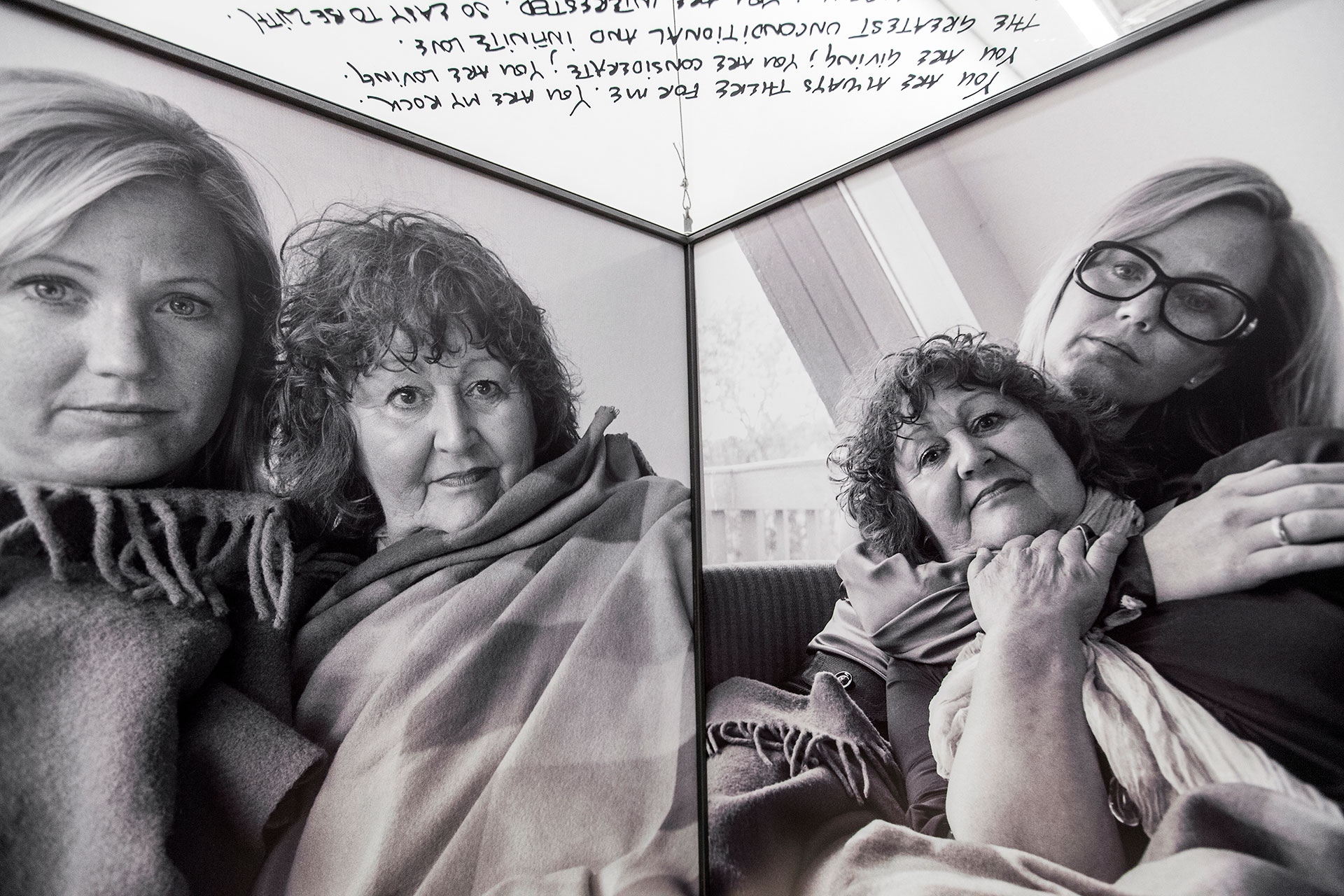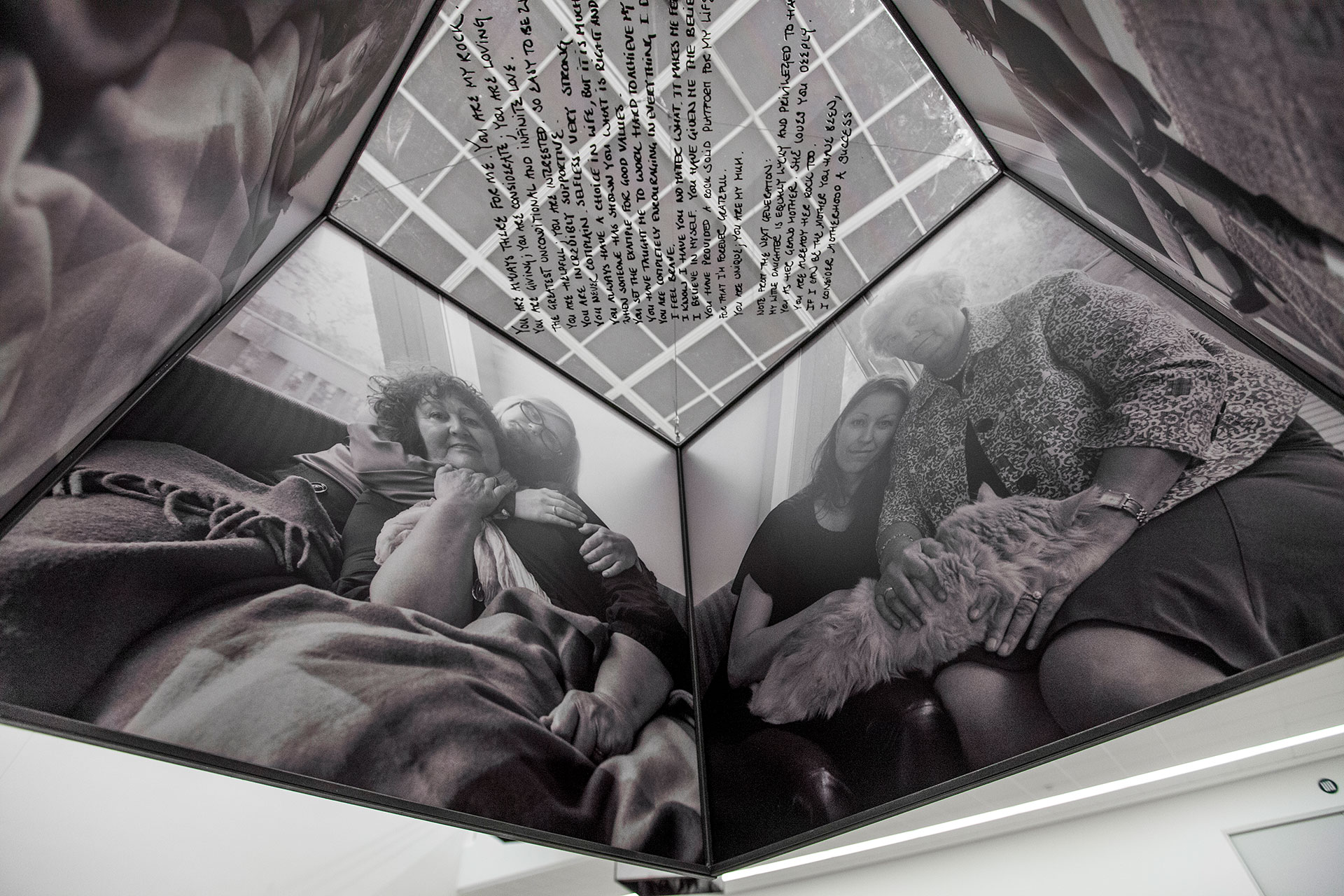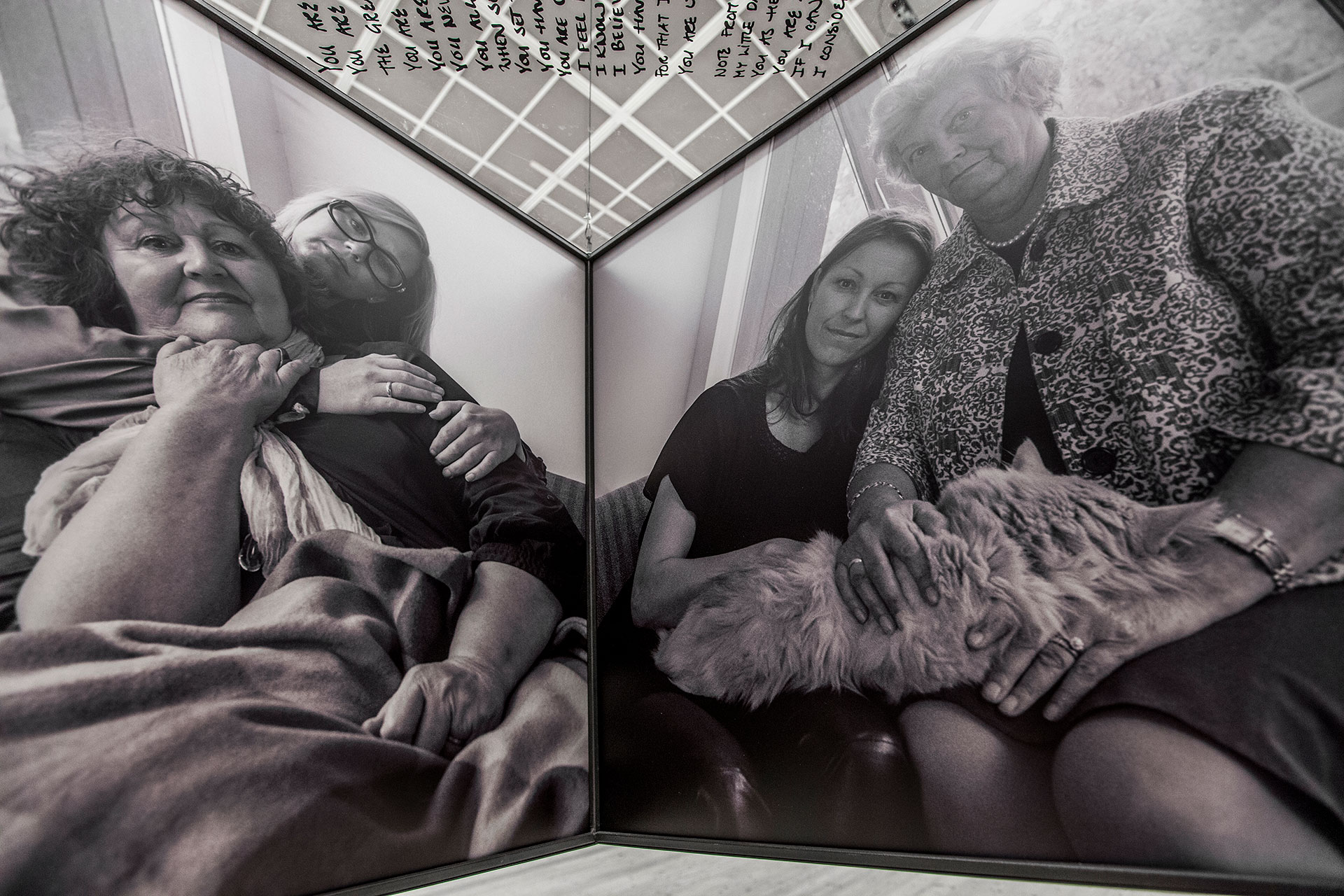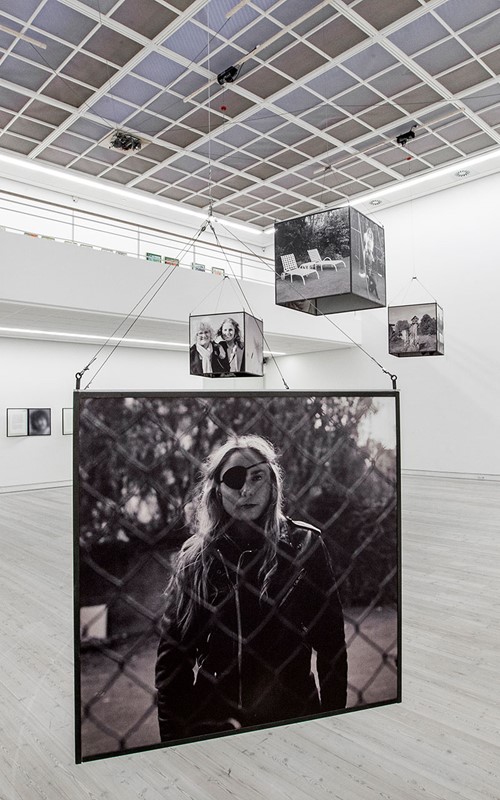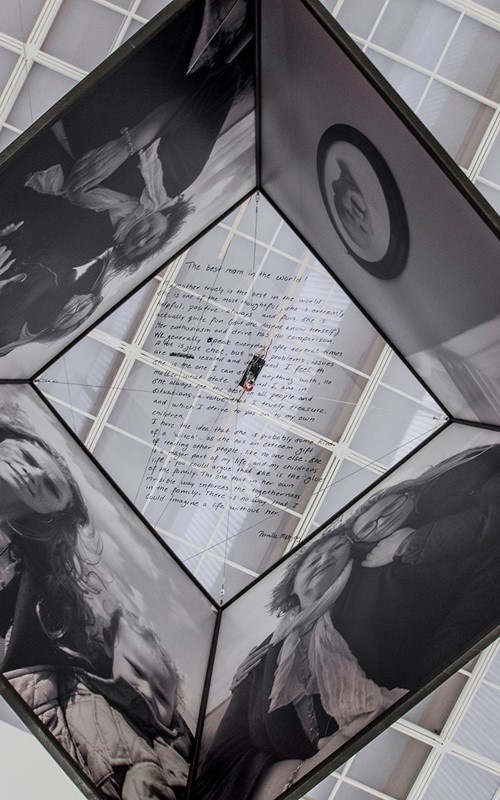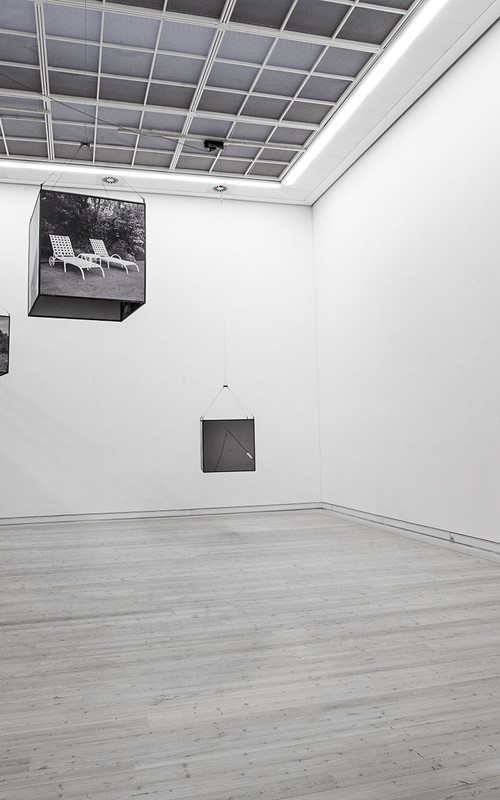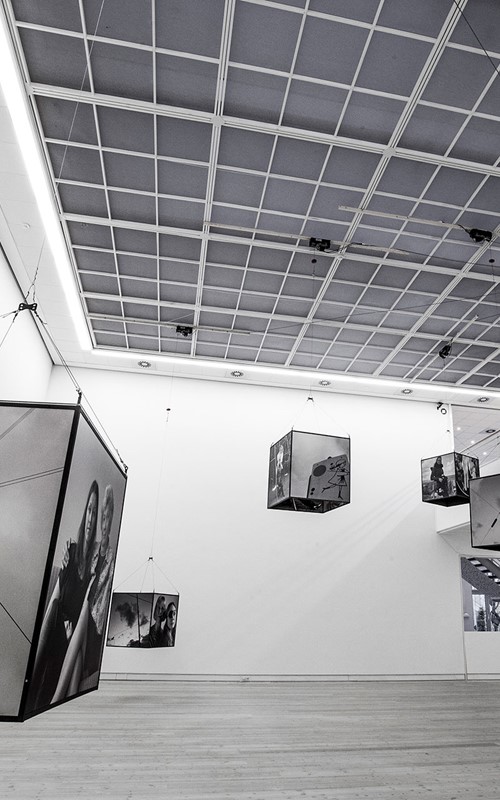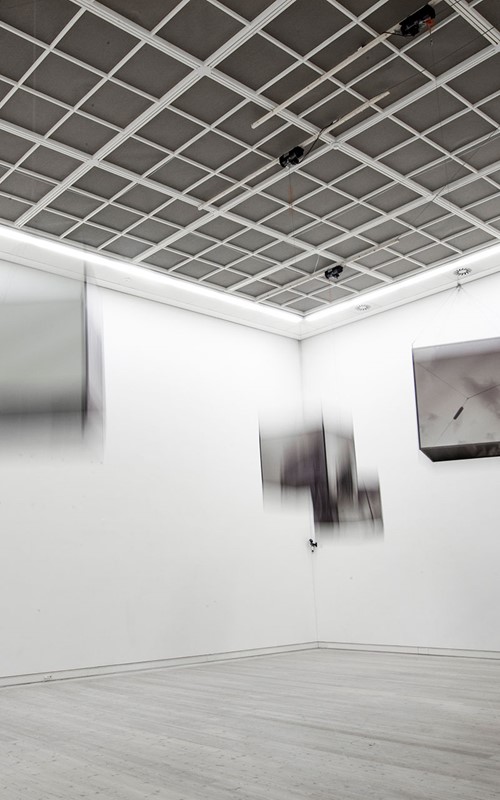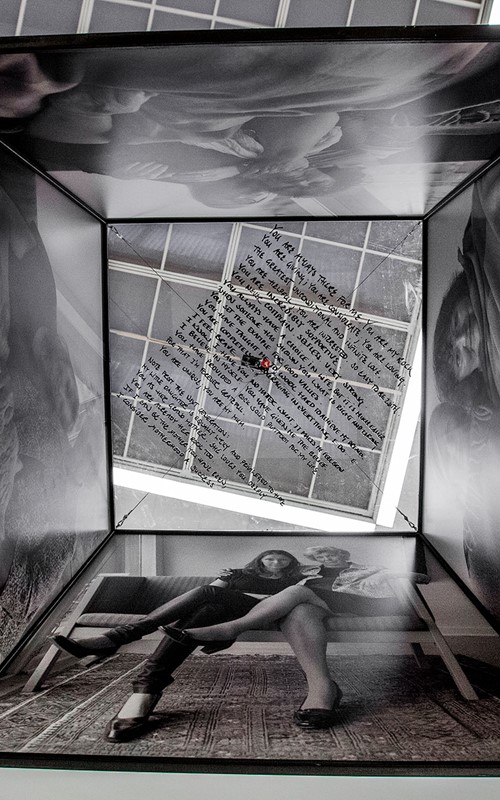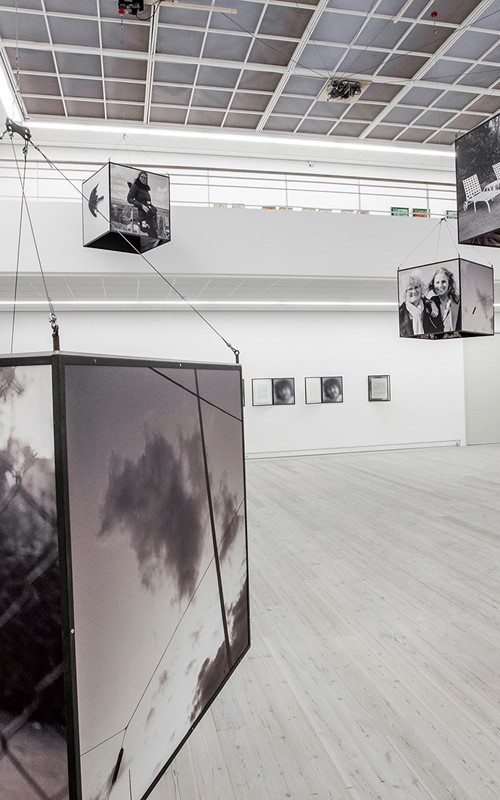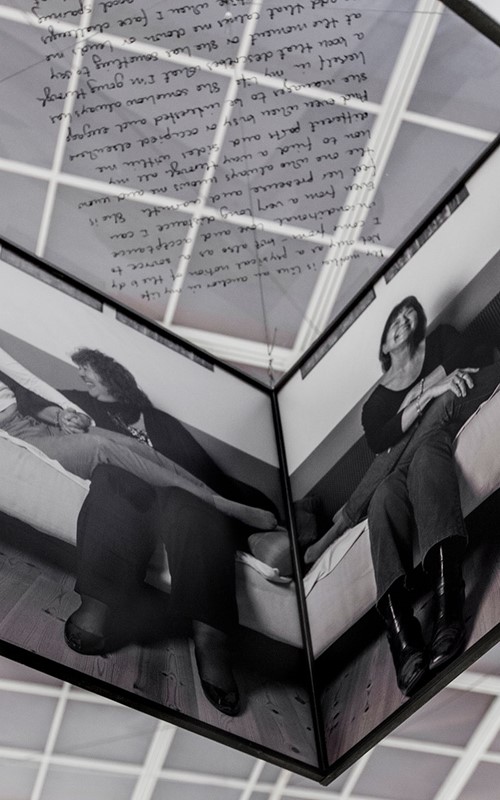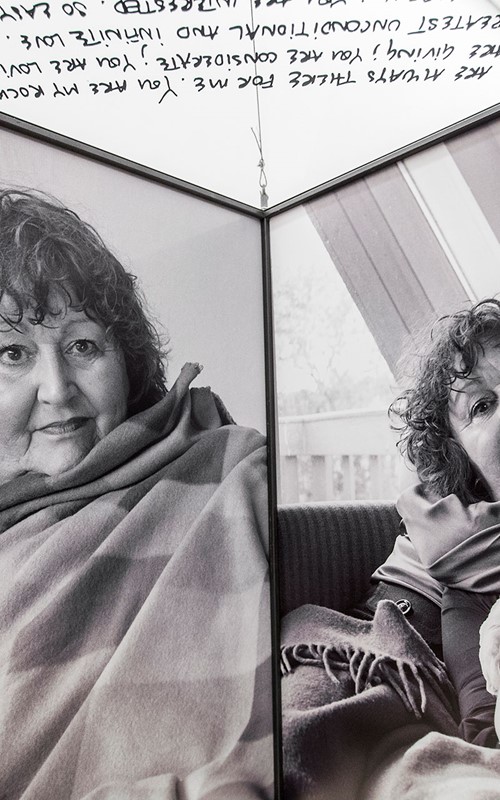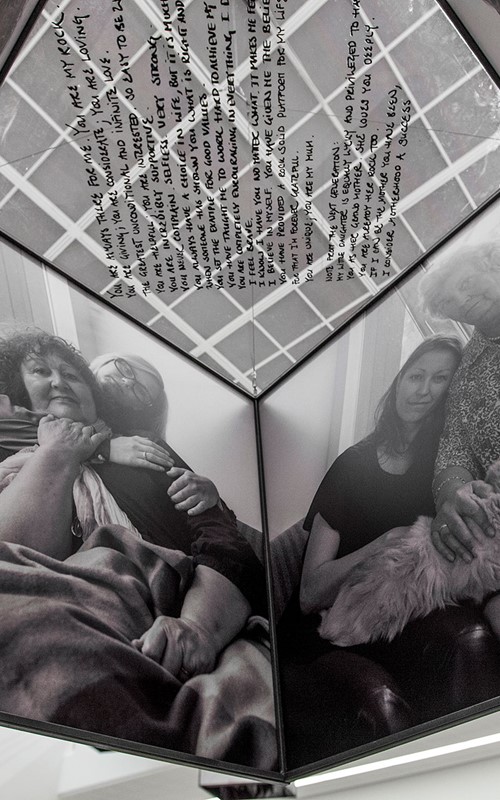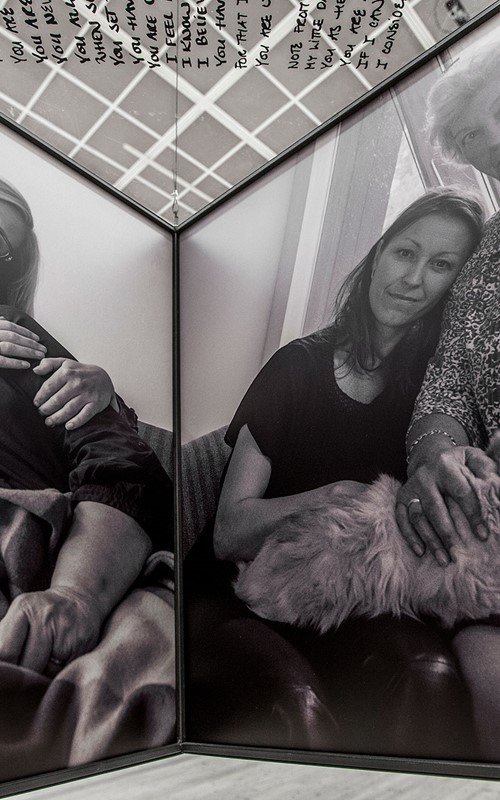Searching For A Mother
Mille Kalsmose in collaboration with Alberto García-Alix
Searching for a Mother is an intimate and visually powerful exploration of the idea of motherhood — not as a biological given, but as a constructed, desired, and emotionally charged relation. In this multimedia work, Danish artist Mille Kalsmose, in collaboration with renowned Spanish art photographer Alberto García-Alix, reimagines the mother-daughter bond through performance, portraiture, sculptural installation, and personal narrative.
The work revolves around the extrapolated sensation of having a mother — a speculative longing that emerges from both personal loss and universal desire. Through a series of staged photographic portraits, immersive sculptural elements, and handwritten reflections, Kalsmose and García-Alix explore what it means to create, imagine, or perform the maternal bond. At the heart of the project is a radical and deeply personal gesture: years after the suicide of her biological mother, Kalsmose initiates a real-life adoption process with a woman she has chosen to be her new mother. Together, the two women inhabit familial scenes — imitating other mothers and daughters in their homes — and thereby question the boundaries between fiction and truth, memory and invention, performance and real emotional connection.
The physical installation consists of six 90 x 90 x 90 cm cubes, constructed of double-sided Dibond disks and suspended within iron frames. These sculptural forms invite the viewer to literally insert themselves into the work by placing their heads inside the cubes. Within, viewers encounter portraits, mirrored surfaces, and intimate handwritten texts from daughters describing their relationships with their mothers. As one moves through the installation, the photo of Mille’s new mother becomes more visible — clearer with each text encountered — suggesting that through understanding the stories of others, one might approach clarity in their own longing.
This immersive interaction highlights the project’s core questions:
-
Can the mother-daughter relationship be formed by will, rather than biology?
-
What does the maternal represent — emotionally, culturally, psychologically?
-
Is the mother a person, a memory, an image, or an idea?
Searching for a Mother destabilizes one of our most taken-for-granted familial roles. Kalsmose’s intervention challenges essentialist assumptions about identity and family, positing that the self is not a static core but a performative, relational, and ever-evolving construct. The artist's earlier works, such as All My Suicides and Different Lives, similarly examined the mutable nature of selfhood, using her personal history as both material and methodology.
In this work, the family portrait becomes an act of creation — a performative naming of a relationship that does not yet exist, but might. As Anne Jerslev writes, this artistic act is not only a representation of a mother-daughter bond, but an actualization of it. Whether the title “Mother” refers to a specific individual or to a general archetype, it draws attention to the performative power of naming: to name someone mother is to invoke and begin to live that role. In doing so, Kalsmose demonstrates how chosen bonds, like chosen identities, can hold as much emotional weight and legitimacy as those determined by biology.
Supported by the Danish Art Council and the Catalan Culture Institute, Window to a Mother is both a deeply personal healing process and a universal reflection on how we form ourselves in relation to others. It invites viewers to contemplate not just the nature of motherhood, but the broader architectures of belonging, love, and self-construction.
By asking a question that is at once basic and radical — What does it mean to have a mother? — Kalsmose opens a window onto the invisible, yet foundational, structures that shape human life and connection.
The Danish Art Council together with the Catalan Culture Institute is supporting the exhibition.
Catalogue Text by:
Anne Jerslev
Professor, PhD
Department of Media, Cognition and Communication
University of Copenhagen
Denmark
SEARCHING FOR A MOTHER
An occupation with identity runs through many of Mille Kalsmose’s works. What is an “I” she asks. How is an “I” coming into being. Exactly this question is essential to Mille Kalsmose’s practice. She does not necessarily pose it in order to come up with a definite answer. Rather it is the very act of asking the question, which is crucial and in doing so calling attention to its underlying premise. Asking how an “I” is coming into being presupposes an understanding of identity as process, continuously in the making. Identity is not a given. It is not a core which throughout life is being filled with the essence it was supposed to inhabit. Identity is not the fulfilment of destiny in Mille Kalsmose’s works. Instead they grabble with the ways identity is constructed through a continuous interaction between the self and the other and how identity is a continuous work, which is inherently social, situated and embodied.
Being a subject and forming an identity is a relational and “networked” matter. Being an “I” is always a question of being more than one. Identity is constituted in relation to and through social exchange with other identities. Moreover, identity construction is a negotiation between individual agency and social structures; a life-long process of choice-making within social and biographical confines and at the same time challenging these confines through the very act of making choices and acting in the world. As such, identity never is, identity is always becoming. Identity is a continuous doing, never fixed. Agency is not an expression of identity but the means through which identity is constituted. Therefore, being in the world could be understood as a kind of perpetual performance on the stage of life, to use Canadian micro-sociologist Erving Goffman’s classical use of the theatre metaphor from the late 1950s. Understanding individual action as a continuous and socially anchored performance of self is an anti-essentialist understanding of identity. Moreover, if identity construction is a performative action in the world, this action is always also framed within and formed by societal conventions.
In the introduction to the anthology Performative Realism from 2005, I argued together with art historian Rune Gade that, ”to be is to perform, to act, to do – but also to conform.”. Identity is a mimicking performance between subjective agency and social routine, between repetition and unique presentation. I think that this is what Mille Kalsmose’s mother-daughter work is about. The work itself is an intervention in the world. It is about the quest for a mother and it insists upon a renegotiation of the mother-daughter relationship. By means of the beautiful black and white larger-than-life photographs of mothers and their daughters taken by Alberto Garcia-Alix the work performs a range of intimate mother-daughter situations. And it shows how the idea of the mother-daughter bonding may exactly be performed through a kind of reiterative gesture where Mille and her maybe future mother repeats what has already once taken place in front of the camera, in order to act or maybe to practice a mother-daughter relationship or maybe through this very practice to actually become mother and daughter.
Like Mille Kalsmose’s 2012 installation “All My Suicides: The Quest for a new Identity or her “Different Lives” video project from 2009, “Searching For a Mother” is an autobiographical identity work where the artist’s life and personal experiences are the point of departure for the artistic creation but also the material and affective engine of the project. It represents and intervenes at one and the same time. “All My Suicides: The Quest for a new Identity” was a work which finalized the artist’s shifts of names over a period of 10 years. It dealt with the way name and identity are tightly woven together and how identity, finally, is a network of the different selves and social roles we have enacted, exercised and tried out through our lives. The work consisted of three different installations. The first was composed of five large, more than two meter high circular luminous columns each containing an enlarged birth certificate documenting the artist’s name changes. The second installation was composed of five different luminous plexiglass head stones representing the burying of a name identity and finally, the third installation united the five headstones into one thus pointing at identity as a weakly connected patchwork. “Different Lives” is a short video installation which documents an artistic real-life intervention, where Mille Kalsmose whose voice over claims that she “never really understood the family concept”, changes life with her friend for some time and in doing so has to perform the role of mother and wife.
“Searching for a Mother” can be understood in continuation of these two works about identity and the family. But even more than the two earlier works, the artist’s new take on the “family concept” is an autobiographical doing. It is a work about identity and it is identity work at one and the same time. By being constituted as a personal and practical project in the real world it presents an idea of life and art as indistinguishable. Or one could say that it is art-work as identity work, art and identity both in process and progress. “Searching for a Mother” explores the question of a personal reality that is coming into being through the very act of exploring this particular personal reality and by materializing it in the large cubes, the photographs of mothers and daughters and the tactile hand-written texts where daughters are affectionately describing their relationship with their mothers.
The present exhibition could be seen as an effort of healing the wound inflicted on Mille Kalsmose by her mother’s suicide many years ago. However, the installation is revolving around more universal questions. It invites the audience to contemplate broader questions of identity as construction and doing. More particularly, it questions the nature of the mother-daughter relationship and ponder whether it makes sense to search for a mother. Can you actually choose a (new) mother? Are there any differences between a biological and a social mother-daughter relationship? Does it show? How can we tell? What is family and how can we recognize a family?
The last photograph in this catalogue apparently portraying the woman Mille Kalsmose is trying to legally adopt as her new mother is titled “Mother”. This ambiguous title opens to at least two different ways of understanding its anchoring of the meaning of the image. Is it exclamatory? Designating? Assigning? Does mother mean “My mother” or “This is my mother” and the title thereby functioning as a performative act: By naming the woman “mother” in the context of the exhibition, she becomes in a certain way Mile Kalsmose’s mother, the mother the artist is searching for. The naming becomes an act with consequences performed through language like the act of baptizing. Understood in this way the photograph would point at the presence of the voice and the body of the absent daughter who is interpellating the woman as her mother. Or should the title “Mother” be genealogical, designating a – biological or social – (proto)type? Understood this way the title would mean “a mother” in the indefinite, general form; like any mother. Despite the accentuation of the unique individuality and the strong reality effect in the close-up of the face, the photographed woman would be depersonalized by this kind of interpellation and transformed into an example of a general, familiar category, the category family member. Understood in the first meaning of the title the woman becomes a specific mother interpellated as such by someone evidently being a daughter (or a son) and the photograph is anchored as a family photograph. In the second understanding of the title the woman is characterized generically and the photograph could be regarded as a kind of ethnographic study for example in an exhibition catalogue about a contemporary “Family of Man”. In the first example “mother” is genealogical and social, in the second it is generic. However, both ways of making meaning point out that being a mother is not destined by biology; neither is it necessarily decided by some social script. “Mother” is a naming that becomes a doing; a mother and daughter relationship is also a doing. Likewise, framing the photograph of Mille Kalsmose’s possible future mother as a kind of family photograph in a sense makes it into a family photo. The artist herself even claims that she uses “the ”family portrait” as an other legalization of my relationship with my coming mother”. Hereby she underlines the strong reality effect of the performative doing and how this effect makes a difference.
A family portrait may be understood as a doing family no matter who is portrayed, whether it is a mother and a daughter or it is a “daughter” in search of a “mother”. Posing for a family photo is a certain performance, a putting on one of the social roles as family member. The family photo or the family snapshot is a well-known genre or framing of reality, which can be filled in in myriads of different ways. However, what unite the photos is the projection of a sense of the authenticity of the moment and a certain truth caused by the intimate relationship between the family members. This goes as well for the photographs of the different mother and daughter constellations in “Searching for a Mother”, two women united not only by the photographer’s lens but also by their shared history. The closeness is further accentuated and authenticated by the cubes’ written texts, which give words to a love relation and by their imaginative handwriting metaphorically emphasizes the bodily closeness in the photographs. However, in between these photos are photos of the artist and her “mother” seemingly mimicking the poses and the laughter and seriousness shared between the mothers and daughters in the other photos.
Mille Kalsmose asks herself whether this mother-daughter bonding can be “copied”. The photos document that apparently it can. But the photos of the artist and her “mother” may also be a performative act, a doing of the real and a representation of the real at one and the same time. They are photos, which are and do in the same movement. They call attention to the fact that performativity involves repetition and citationality and, hence, how performative agency is connected to conformity. In the words of Erving Goffman, social communication is understood as the repetition of routines selected and re-used by each individual in different situation. The photographs make aware how none of the installation’s mother-daughter situations are more authentic than the others and how mediation is always a kind of performance. According to Goffman, what is real is what is convincingly acted as real. By means of the large photographs of close-up of faces, of seemingly spontaneous interactions and more tableau-like poses which the viewers are invited to linger on and scrutinize, even become part of, we are given a feeling of privileged access to intimate situations. But simultaneously, the projected impression of authenticity and sincerity is based upon the repetition of a historically determined agreement on the kinds of performance that may pass as authentic. I think that Mille Kalsmose-Hjelmborg’s “Searching for a Mother” strongly advocates for identity as a relational matter. Moreover, the scale of the cubes and their invitation to immersion but also to contemplate the whole installation at a distance point to the interaction with the work as identity-work. Even though the viewers might not be searching for a mother, they may indulge in the project’s investigation of the social and artistic construction of mothers and daughters. By posing a question so basic, so seemingly non-questionable or naïve and yet very radical, Mille Kalsmose opens up an enormous field of invisible layers in our relationships – not just with our mothers but regarding the nature of relationships as such and bringing it to an existential level.
For inquiry contact Martin Asbæk Gallery: liselotte@martinasbaek.com
